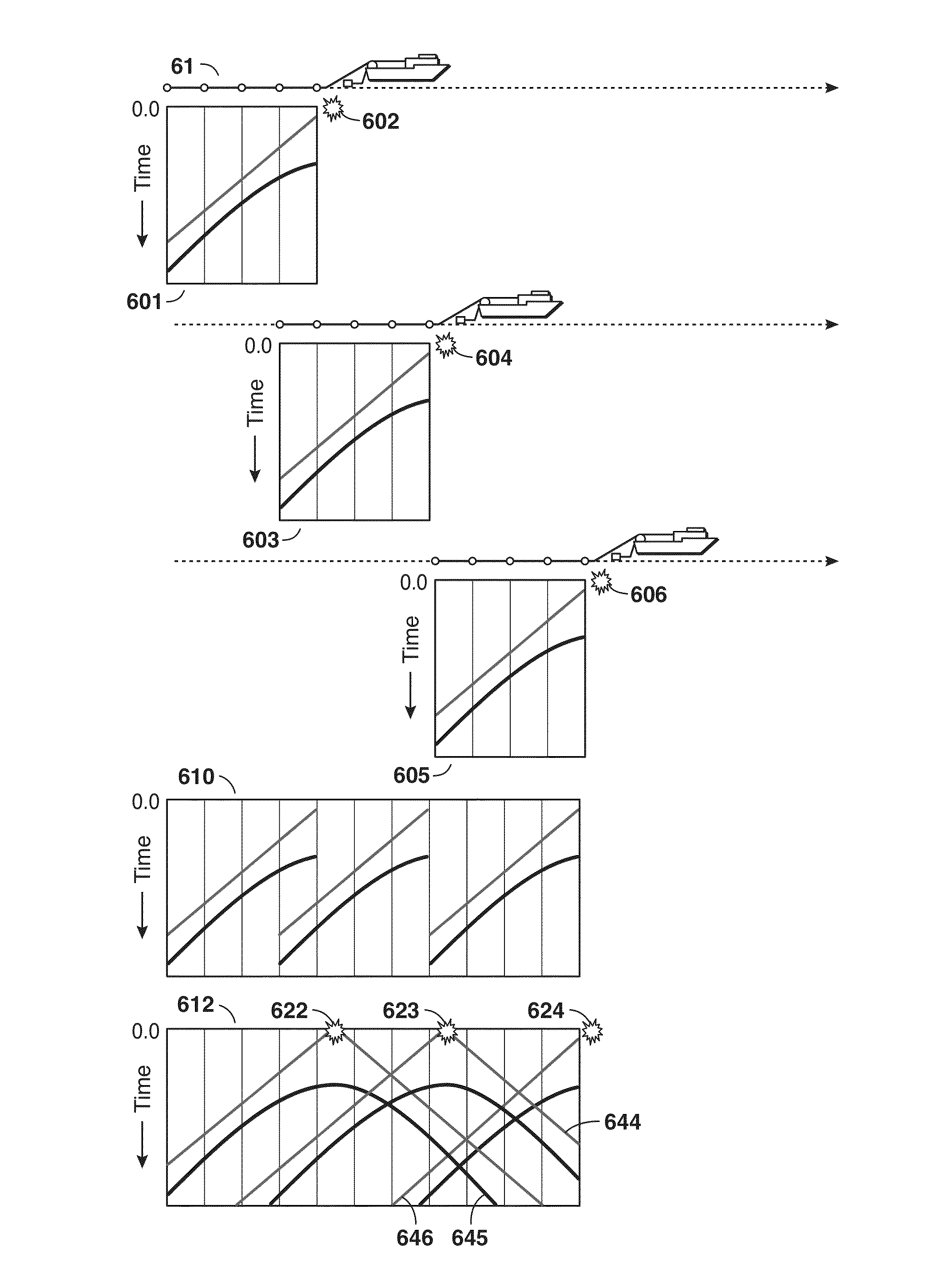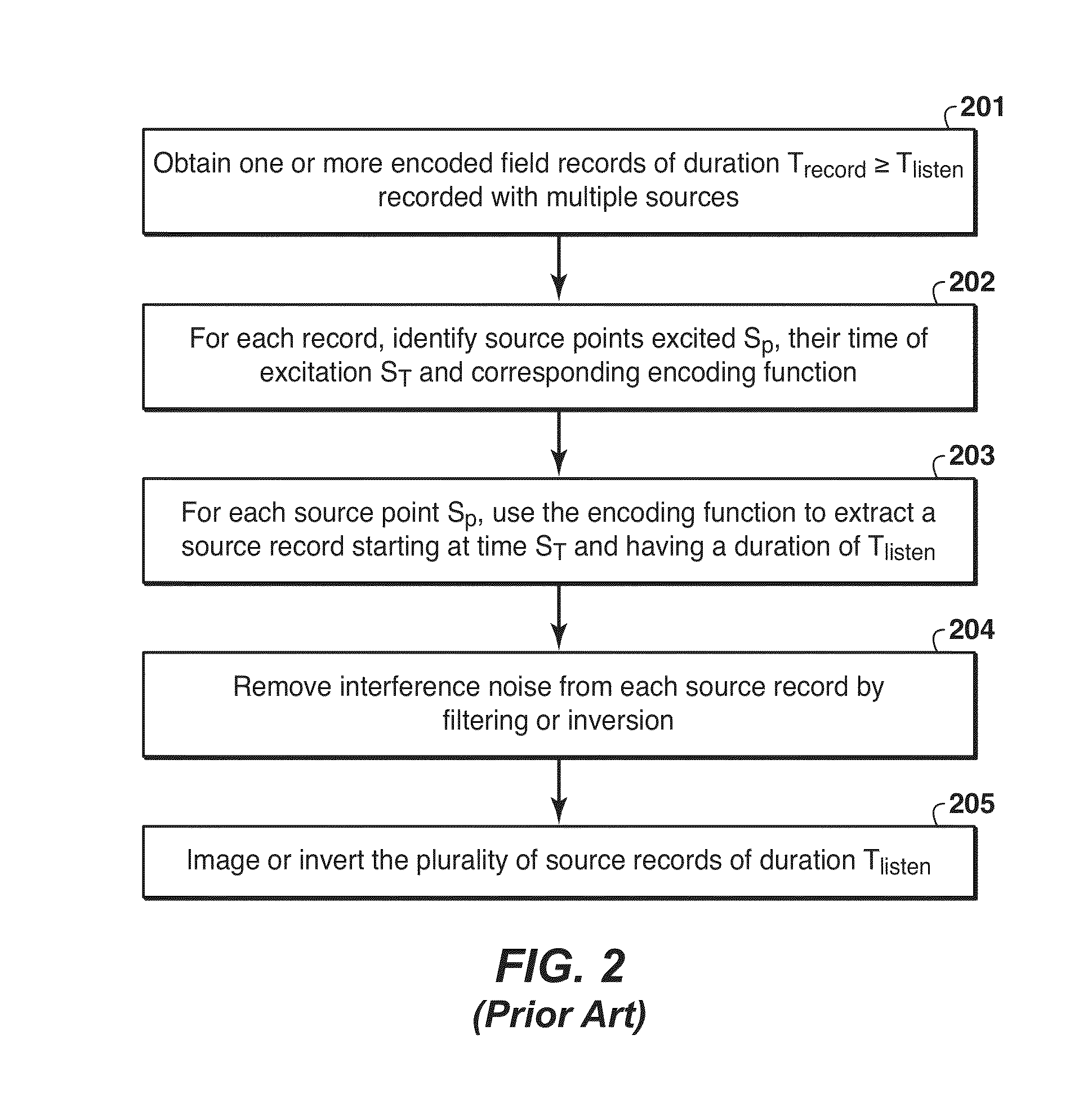Simultaneous sourcing during both seismic acqusition and seismic inversion
- Summary
- Abstract
- Description
- Claims
- Application Information
AI Technical Summary
Benefits of technology
Problems solved by technology
Method used
Image
Examples
embodiment
Marine Embodiment
[0051]In this section, a particular embodiment is described that overcomes the moving spread problem for marine streamer, which was illustrated in FIG. 6. This will further explain by illustration what is meant by planning acquisition to allow pseudo super-source construction in step 701, and how the pseudo super-source records are constructed in step 703. In this embodiment, an acquisition geometry and firing pattern is used so that the super-shot gathers can be constructed and better approximate the fixed-spread geometry needed for computer simulation. In Step 701, acquisition is planned that modifies the acquisition geometry shown in FIG. 1, by locating a source at the rear of the streamer for every source in the front of the streamer as shown in FIG. 8. As the source and streamer boats move forward, the rear sources follow the same source line as the front sources. Note that the sources 803 and 807 track source line 801, and sources 804 and 808 track source line...
examples
[0062]FIG. 16 shows a velocity model example in 2D. Due to patent law restrictions on the use of color, FIG. 16 is a black-and-white reproduction of a data display where velocity is quantitatively represented on a color scale. The data were computer-simulated with a front and rear source and field encoding with random time delays up to 200 ms using the near-surface model shown in 1601. Using the conventional method for simultaneous encoded-source inversion with the moving streamer data will not yield the correct results (not shown) because of the failure of the fixed-receiver assumption. Then the super-source gathers were constructed as described in the marine embodiment, and a low-frequency inversion was performed using the present inventive method with the results shown at 1602. It can be seen that the model inferred by data inversion using the present inventive method compares very favorably with the “true” model 1601.
PUM
 Login to View More
Login to View More Abstract
Description
Claims
Application Information
 Login to View More
Login to View More - R&D
- Intellectual Property
- Life Sciences
- Materials
- Tech Scout
- Unparalleled Data Quality
- Higher Quality Content
- 60% Fewer Hallucinations
Browse by: Latest US Patents, China's latest patents, Technical Efficacy Thesaurus, Application Domain, Technology Topic, Popular Technical Reports.
© 2025 PatSnap. All rights reserved.Legal|Privacy policy|Modern Slavery Act Transparency Statement|Sitemap|About US| Contact US: help@patsnap.com



